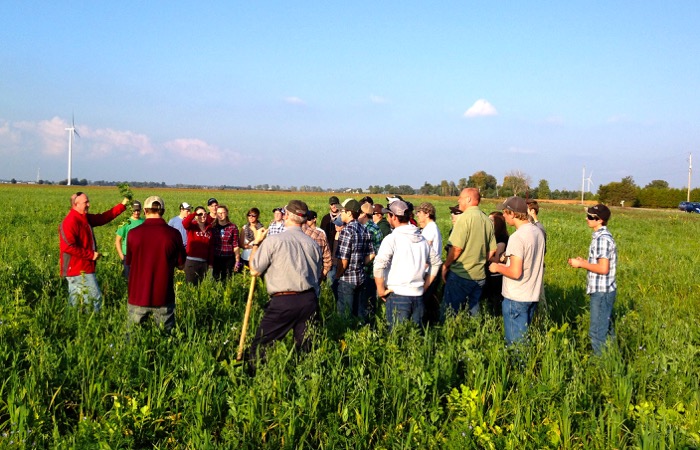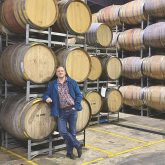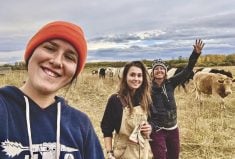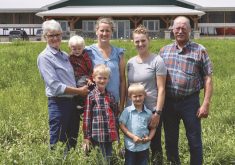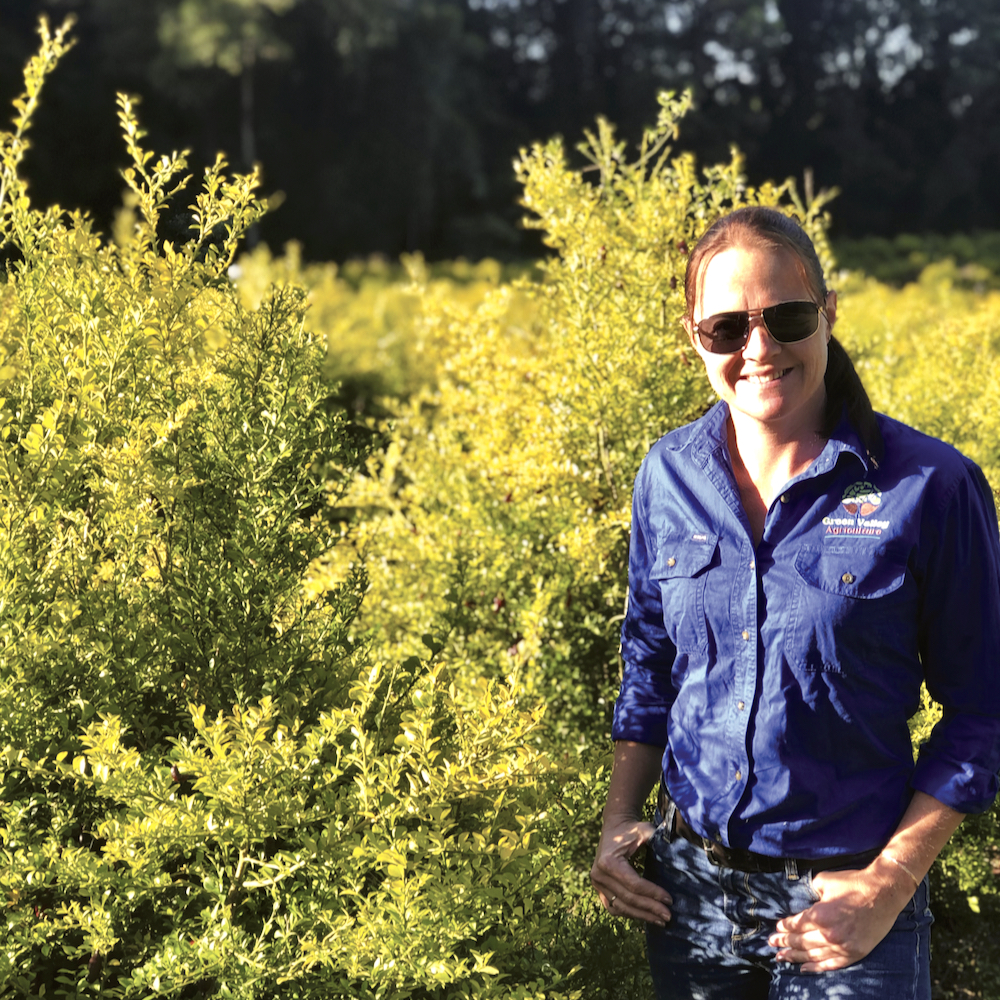Farmers need to open their farms to more people!” It’s a modern rallying cry from both inside and outside the agri-food industry as the two sides try to build better bridges to each other. But when do dairy or hog producers have time to conduct tours? And are grain farmers supposed to stop planting or spraying just because some group is out for a drive?
Doesn’t “open” mean “overrun?”
Maybe it’s a matter of setting parameters, and then keeping to them.
It’s a strategy that works for Shawn McRae as he continues his grandfather’s tradition of opening his farm to research. McRae farms 500 acres at Bainsville, Ont., near the Quebec border, and he hosts three or four farm tours each year. Most are first-year students from McGill University’s Macdonald Campus in Montreal’s west end, but there are also groups of grad students who come to the farm to work on their theses.
Read Also

Riding the tariff rollercoaster
Farmers are accustomed to roller-coaster years. But the current geopolitical windstorm is something else entirely. On his cattle operation near…
“I get to experience the unique reward that teachers talk about — when you can change a bored expression into rapt attention, or take farm-savvy kids who figure they already know their stuff and open them to a new line of thinking,” says McRae. “Or take a city kid who’s maybe top of the class in technical knowledge. Drop a chunk of sweet-smelling, well-aggregated soil in their hands, and watch their expression as the earthworms crawl out. Anything you can do to open a window and expand a kid’s receptivity to new knowledge, or inspire creativity — that is priceless.”
It was McRae’s grandfather followed by his father who started him on this path, working with Kemptville College as something of a payback to their alma mater. Much of the work done on the McRae farm from the 1960s to the 1990s focused on tile drainage, with Dr. Bob Broughton visiting during the summers of McRae’s formative years. Broughton came to the farm to design a system that would solve the flooding that resulted from dams on the St. Lawrence Seaway. The goal was to lift the water from the tile drainage system, and Broughton was successful. From there, he began sending grad students to the farm to study the system he and the McRaes had built.
“One of those grad students also became a professor — Dr. Peter Enright — so he started bringing his first-year students,” says McRae. “And they’re very ‘fresh’ — they’re in their first week of school when they come out, and the tours have kind of evolved from there. There’s no monetary return to it, so it’s a thing to do because you believe it’s the right thing to do, and there’s no predicting what good will come of it, but you know intuitively that it’s something you should do.”
The number of first-year students who come out to the farm is now up to around 40, partly due to the run-up in commodity prices starting in 2008. It was at that point, says McRae, that more young people began to think about agriculture.
McRae was a student himself (at the University of Guelph) when he got involved, so he was practically the same age as the group. “That’s all changed, to the point where I now have another 20 years practical experience under my belt,” says McRae. “Now being a more mature person, I’m looking at these students and as I scan their faces, I’m looking for a change in their level of interest as we go through things, and the expression often goes from ‘We’re at a farm, and what a waste of time,’ to where I start going through the complexities involved, and it’s almost inevitable that I can draw them in.”
McRae also hosts groups of agricultural specialists from China, which has helped change his own outlook. With visitors from another country, he’s not seeing “fresh-faced” young Canadians but international business people, who until recently were more likely to be viewed as potential competitors instead of colleagues.
“I often ask myself why I’m giving away my ‘secrets’ to my competitors, but it’s just the way I was raised,” says McRae. He adds that it was much the same attitude that spurred his father’s interest in joining the Innovative Farmers Association of Ontario. “It’s just the way you grow together — you get more than you give in the end, but it’s hard to keep a ledger account of that.”
In addition to visiting Chinese specialists, McRae has hosted several farmers from Quebec, many of whom are ridge-tillers, with a few organic growers as well. The exchange of information there includes what McRae considers some tough questions concerning the equipment he uses. Yet coming out of those sessions, he’s received reciprocal invitations — to visit the Quebec farmers, as well as those in China. It’s impossible, he notes, to predict the kind of relationships that those visits might foster, but 20 years from now, says McRae, his children might see some fruit from the seeds he’s sowing today.
Seeing a field as a classroom
Where McRae is part of a long-standing tradition, Blake Vince is a bit of a novice, but only in terms of on-farm visits, an idea he got involved with last September. It was Dr. Dave Hooker of the University of Guelph’s Ridgetown Campus who approached Vince, who farms just southwest of Chatham, Ont.
Hooker had developed a “Crop Club” for students, and he proposed the tour to Vince, who agreed to an evening visit, hosting the first meeting of the new club the first week of school.
Just as McRae says he loves to “see the light come on,” Vince experienced the same sense of satisfaction, both in the field and after the visit, often via Twitter.
“They’re engaged and they begin to formulate things as they’re standing there, seeing they do have a place where they can fit in, in this industry,” says Vince, who recently completed his Nuffield Scholarship. “I told these students what my Twitter handle was, and immediately the kids who were there that night started following me. And some of them would be asking questions, some from those who weren’t even there that night. Others asked me questions they wouldn’t ask me in front of the group, and there was a lot of positive feedback.”
The group that came out was a cross-section of grad students who were at the campus working as well as students who are currently enrolled there. The questions ranged from “How are you able to do it?” to questions about what motivated Vince to farm.
“A lot of these students who are at the agricultural school are part of this younger generation that’s enamoured with the ‘big shiny things’ — the big iron, the high-horsepower tractors — the ‘bling’ of agriculture,” says Vince. “I try to convey to them that it’s not about having your assets on display. It’s not about physical bushels — we have to get back to thinking about financial yield. So many of them are tied up because the whole industry has us going down this path of ‘producing more, producing more,’ and we have to get away from that. For a younger farmer, it’s even more important to look at the economics rather than worrying about having the latest and greatest tool.”
Bigger picture at stake
Like McRae, Vince believes he has a part to play in providing information to the next generation of farmers, and to reach those younger students and share the message with them that agriculture is no longer only about farming. The opportunities are there in other career paths. The industry needs accountants, web designers and business planners, as much as it does crop advisers, plant breeders and soil specialists.
Vince mentions that the growing age gap in agriculture was referenced in one presentation at the 2015 Southwest Agricultural Conference, held at the Ridgetown Campus at the beginning of January. Agriculture has been relatively strong since 2007-08, especially growing corn, wheat and soybeans, and a lot of people’s heads are being turned back towards the farm.
“So there’s a renewed interest in agriculture and there’s a larger flush of young kids coming into the industry,” says Vince. “When I left high school in 1991 and started down the path of post-secondary education, I was the only student from my graduating class who went on to study agriculture. Now, a lot of these kids from farms are considering agriculture as a potential career path.”
Taking part in building that foundation for younger generations, and perhaps tweaking their interest levels also has the added benefit of showing Chatham-Kent in a more positive light. Once a vibrant balance of auto parts plants and agriculture, Vince believes the community has forgotten its ag potential.
“If we want to keep from exporting all of these young minds away from the municipality, we need to start cultivating some of these people who have the agricultural aptitude to say, ‘Yes, this is a viable career opportunity, right here at home,’” says Vince. “We have to get these next-generation leaders to say, ‘Hey, agriculture has more to offer than just driving a tractor or working with animals — it’s multi-faceted. And as technology evolves so rapidly, I think that is such a key ingredient for those young minds.”
One difference that separates these two “teachers” is that Vince has been conducting his own “ag-in-the-classroom” sessions for several years, starting with a series of career days for his sister-in-law, a teacher who invited him to share and speak as a farmer. Then he took that same message to the classroom for his son, who’s nine, and his daughter, who’s 12. His nephews even follow him on Twitter — and they’re not farm children. But it doesn’t stop them from learning from their uncle.
“I’m in agriculture, and it’s not as though I’ve stopped learning — I’m still willing to continue to learn, so I try to be a role model for the next generation,” says Vince. “And that’s regardless of whether they’re my kids or someone else’s kids; I think it’s very important to give back.”


